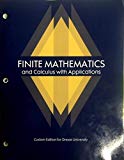
Exercises 15–18 require both the trapezoidal rule and Simpson’s rule. They can be worked without calculator programs if such programs are not available, although they require more calculation than the other problems in this exercise set.
Error Analysis The difference between the true value of an integral and the value given by the trapezoidal rule or Simpson’s rule is known as the error. In numerical analysis, the error is studied to determine how large n must be for the error to be smaller than some specified amount. For both rules, the error is inversely proportional to a power of n, the number of subdivisions. In other words, the error is roughly k/np, where k is a constant that depends on the function and the interval, and p is a power that depends only on the method used. With a little experimentation, you can find out what the power p is for the trapezoidal rule and for Simpson’s rule.
15. (a) Find the exact value of
(b) Approximate the integral in part (a) using the trapezoidal rule with n = 4, 8, 16, and 32. For each of these answers, find the absolute value of the error by subtracting the trapezoidal rule answer from the exact answer found in part (a).
(c) If the error is k/np, then the error times np should be approximately a constant. Multiply the errors in part (b) times np for p = 1, 2, etc., until you find a power p yielding the same answer for all four values of n.
Want to see the full answer?
Check out a sample textbook solution
Chapter 15 Solutions
Finite Mathematics and Calculus with Applications
- 2. Find a matrix A with the following qualities a. A is 3 x 3. b. The matrix A is not lower triangular and is not upper triangular. c. At least one value in each row is not a 1, 2,-1, -2, or 0 d. A is invertible.arrow_forwardFind the exact area inside r=2sin(2\theta ) and outside r=\sqrt(3)arrow_forwardA 20 foot ladder rests on level ground; its head (top) is against a vertical wall. The bottom of the ladder begins by being 12 feet from the wall but begins moving away at the rate of 0.1 feet per second. At what rate is the top of the ladder slipping down the wall? You may use a calculator.arrow_forward
- Explain the key points and reasons for the establishment of 12.3.2(integral Test)arrow_forwardUse 12.4.2 to determine whether the infinite series on the right side of equation 12.6.5, 12.6.6 and 12.6.7 converges for every real number x.arrow_forwarduse Cauchy Mean-Value Theorem to derive Corollary 12.6.2, and then derive 12.6.3arrow_forward
- Algebra & Trigonometry with Analytic GeometryAlgebraISBN:9781133382119Author:SwokowskiPublisher:Cengage
